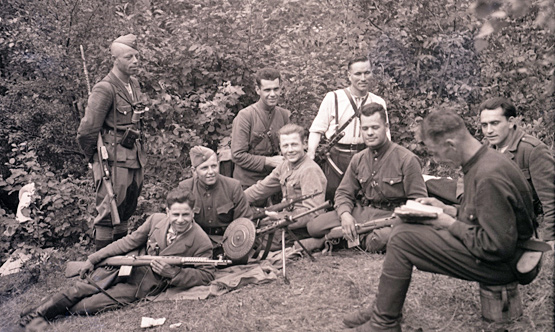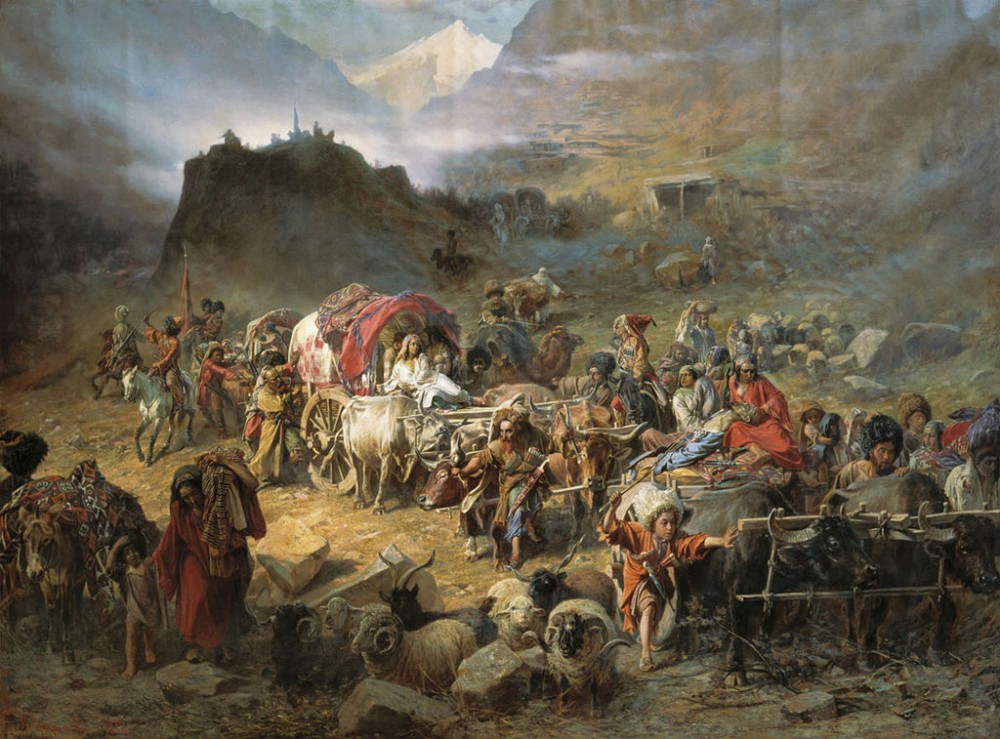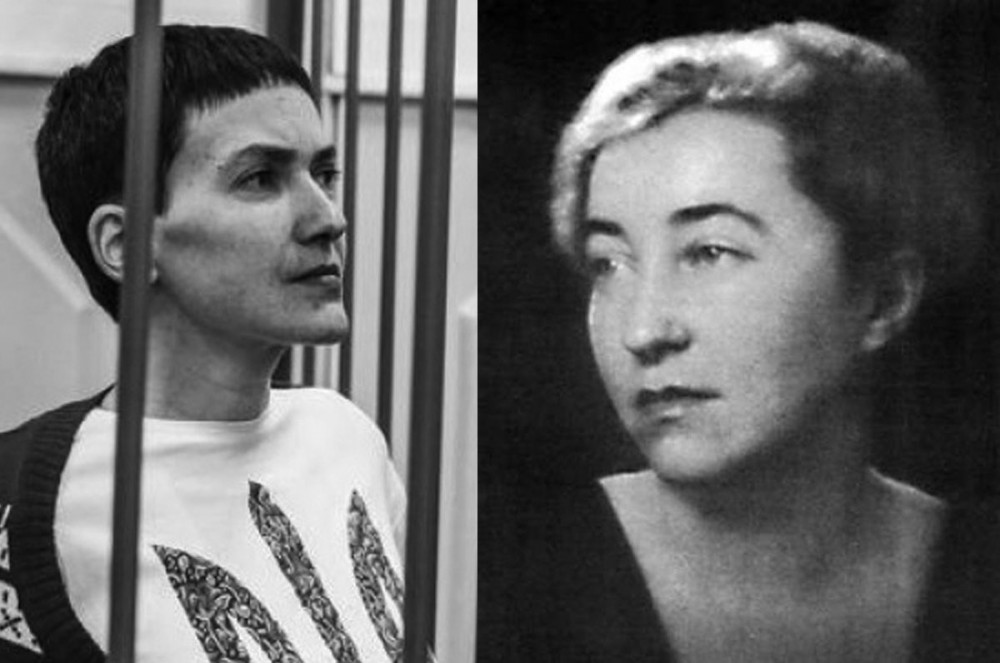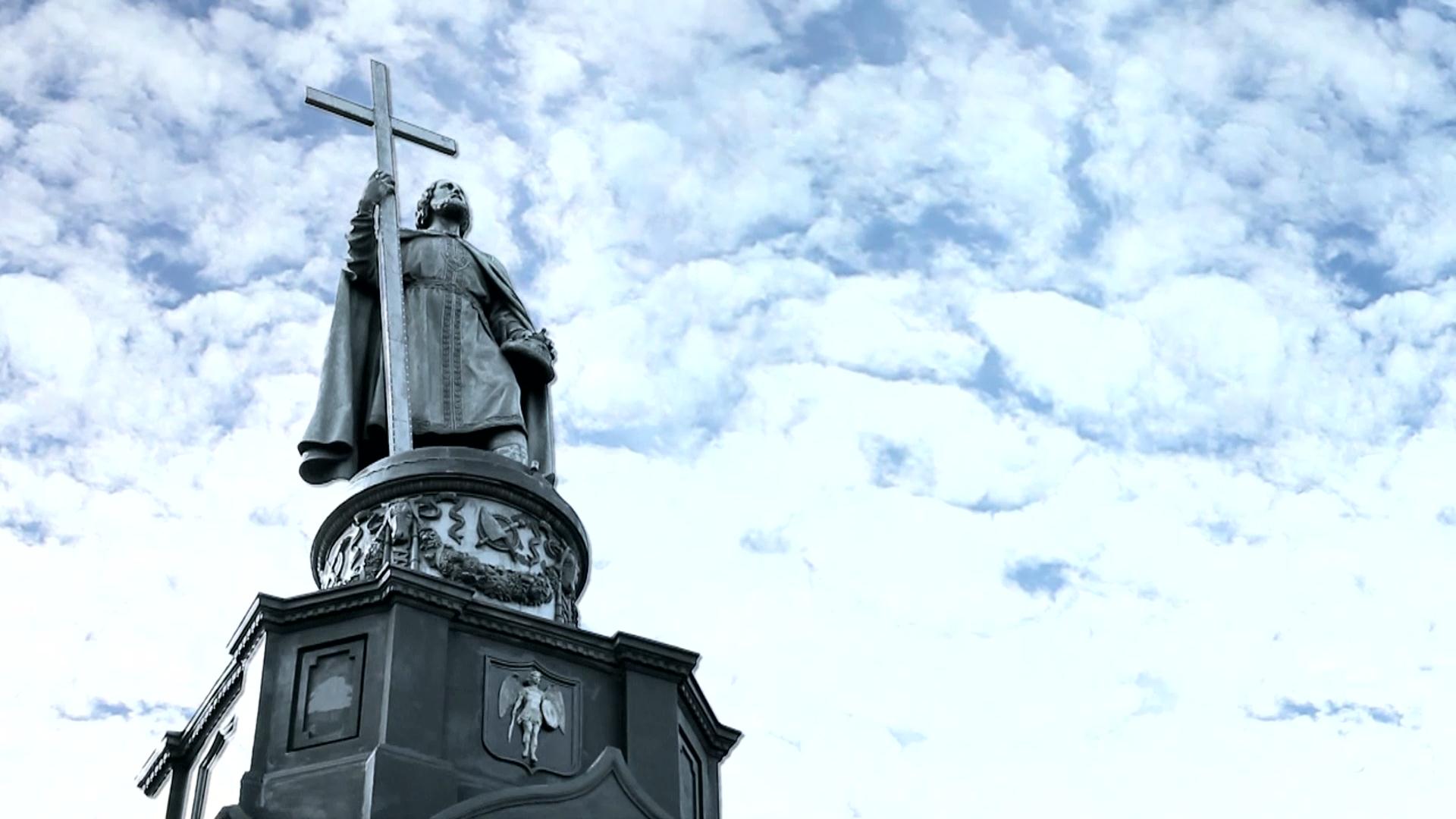Historical Background
Religious Feast of Pokrova (Intercession of the Virgin Mary)
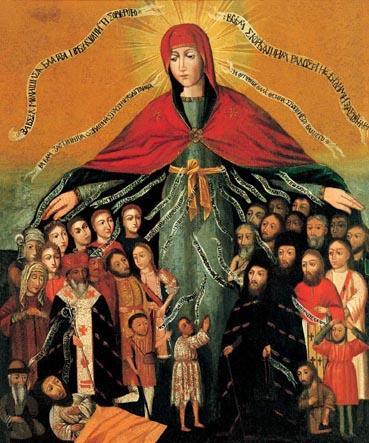
On October 14th, the Eastern Rite churches (Orthodox and Greek Catholic) celebrate the Feast of Pokrova. The origin of this religious tradition is associated with the legend of the Holy Virgin Mary who protected the city of Constantinople with her shroud.
In Ukrainian traditions, this feast is closely linked to protecting the people and nation from enemies. The Ancient Chronicle of Rus mentions that Prince Yaroslav the Wise put Kyiv and all Rus lands under the protection of Our Lady. Many Orthodox churches built in Rus and Kozak days were devoted to the veneration of the Virgin Mary.
The Feast of Pokrova of Our Holy Virgin was one of the most important religious celebrations for the Kozaks. The renowned researcher of Zaporizya, Yaroslav Yavornytsky wrote: “... covered and protected by the shroud of Our Lady, the Kozaks were afraid of no enemy fire, no disaster or sea storms.” This was a religious feast for Zaporizhya Kozaks, and the Church of the Holy Intercession always stood in the center of the Kozak stronghold. It was a sacred place to each Kozak – they left the door of the church to defend their native land, and returned from combat with humble gratitude for saving them from the enemy. It was during the Feast of Pokrova that the Kozaks conducted their council, during which they elected a new hetman or ataman.

The cult of Pokrova spread throughout the Ukrainian Kozak state – the Hetmanate. Churches were constructed and Pokrova iconography spread through the country, especially during the period of Hetman Ivan Mazepa.
Seeing that Ukrainian Kozaks so greatly honoured this feast, it became known as the Kozak Pokrova. It is in this way that the Feast of Pokrova began to be associated with such concepts as military honour, courage, bravery and chivalry.
In the XX century, partisans and soldiers fighting for Ukraine’s independence followed Kozak traditions, namely the Army of the Ukrainian People’s Republic and the Ukrainian Insurgent Army (UPA).
A Presidential Decree issued in 1999 established October 14th as the Day of Ukrainian Kozaks.
The Ukrainian Insurgent Army (UPA)
The Ukrainian Insurgent Army was a military -political formation of the Ukrainian liberation movement. The UPA was symbolically founded on October 14, 1942. It was operational until September 1949, and was then reorganized into an armed underground resistance movement that lasted until early 1960.
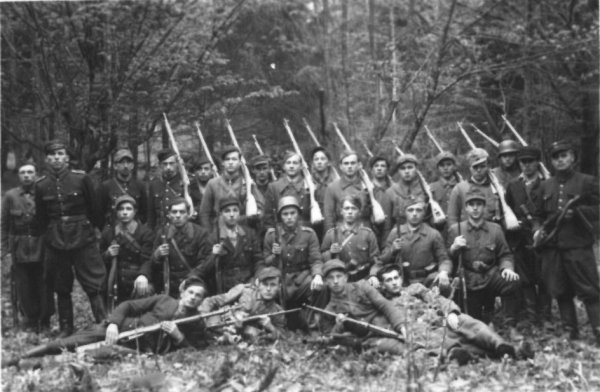
The UPA was the only military force in World War II to define a strategic goal - the creation of an independent Ukrainian state; therefore, the soldiers were ready to fight against all countries that tried to prevent the formation of an independent nation.
From the very beginning, the UPA was created as a response to Nazi Germany’s occupation and terror. Anti-German campaigns were organized and waged throughout the entire period of German occupation. Whole Ukrainian regions were freed from German occupants; it is in such zones that the so-called ‘insurgent republics’ were created, where supreme authority was exercised by the UPA.
Between 1943 and 1944, the UPA engaged in guerilla attacks against the Polish forces that were trying to restore the pre-war borders of Poland.
During its entire existence, the UPA fought against the Soviet Union as their primary opponent as it was this state that had caused the Ukrainian people the most suffering and losses due to mass political repression, the Holodomor (famine), and forced deportation.
In 1944, the Ukrainian Supreme Liberation Council was created as a separate body of the UPA’s political leadership and the entire liberation movement; it was a kind of proto-parliament, consisting of representatives of different political forces.
The UPA was most active in the second half of 1944, when it included such territories as present-day Volyn, Rivne, Zhytomyr, Khmelnitsky, Vinnytsa, Ternopil, Ivano-Frankivsk, Lviv, Transcarpathian oblasts, the eastern territories of Precarpathian and Lublin voivodships of Poland, and the southern areas of Brest and Pinsk oblasts of Belarus. In 1944, the insurgent movement controlled an area of about 150,000 square kilometers, inhabited by about 15 million people. This represents about a quarter of the area of present-day Ukraine, a territory larger than modern Greece, with a population equal to the population of the Netherlands. Moreover, the nationalist underground organization OUN, which was linked to the UPA, operated throughout Ukraine, including in Crimea and Donbas.
The UPA observed the principles of a regular army: it had central military headquarters and headquarters for military units, officers’ schools, a military gendarmerie, and its own system of ranking and awards.
Over a hundred thousand people served in the ranks of the UPA. More than half a million people were repressed by the Soviet Union for participating in or supporting the insurgent movement.
The UPA reflected a logical continuation of previous Ukrainian liberation movements, i.e. the national uprising in 1917-1920, and the underground resistance and combat operations of the Ukrainian Military Organization and the Organization of Ukrainian Nationalists from 1920 to 1930. The UPA’s struggle for independence continued in the form of non-violent resistance as witnessed in the dissident movement and the national democratic revival of the late 1980s and early 1990s.
The struggle of the Ukrainian insurgents was one of many anti-totalitarian movements in Central and Eastern Europe, such as the underground movements in Poland and the Baltic countries. The UPA stands for the right of every nation to self-determination and sovereignty. In accordance with international conventions, the armed forces of liberation movements should answer to several criteria - a clear hierarchical/vertical command structure, specific army insignia, the right to bear arms, and adherence to international rules of war. All these criteria are features of the Ukrainian Insurgent Army.
The UPA falls clearly within the description of a Ukrainian liberation movement – different kinds of activities carried out by organizations and individuals, which were aimed at reviving the independence of the Ukrainian people. UPA veterans, as well as participants of similar military formations in Poland and the Baltic countries, should receive special status from the Ukrainian government naming them members of a liberation movement.
Hystorical myths about UPA
As the UPA fought against the Soviet forces, it has been subject to extensive Soviet propaganda after the end of WWII, a tradition that the Kremlin continues today. Here we examine some of the most widespread myths perpetuated by Russian media - Ed.
Myth 1: UPA, SS Nachtigall, SS Halychyna are organizations that were created by Germans out of "traitors of the Soviet motherland”
As a result of long-term soviet propaganda, names and affiliations of different Ukrainian political and military organizations have been mixed together. To have an objective assessment of anti-soviet military organizations, details are important.
A common misconception is that Nachtigall battalion belonged to SS (ger. Schutztaffel - protection troops) - it didn't. For this reason its Ukrainian leader Roman Shukhevych couldn’t have a rank of Hauptsturmfuhrer - this is a myth. This was a formation created by the Abwehr German military intelligence service. Most of Nachtigall's soldiers had never been citizens of USSR and therefore couldn’t betray the Soviet Union. When the battalion was disbanded, many of them, including Roman Shukhevych, became guerrillas and fought against German fascists.
UPA is a guerrilla formation that appeared in the far rear line of the German forces in 1942. Its goal was to resist German occupation. UPA's first battles were against Hitler’s police. The leaders of UPA saw the German-Soviet war as a favorable time for a revolution that would lead to the liberation of Ukraine. They were not interested in the full victory of any side. That is why many short-time agreements on neutrality and cooperation with both sides were made. On the political level, Germany was considered to be an enemy, as it was an invader. Ukrainian rebels fought the Germans until 1944, when the last fascist forces left Ukrainian territory. The losses that were inflicted on German forces by UPA come close to those inflicted by soviet partisans.
The SS Halychyna division was created by the German occupation administration. The Ukrainian nationalist underground held campaigns among young people to not to enter its ranks to avoid becoming German "cannon fodder.” Many of those who did make this mistake later defected and joined UPA ranks.
Myth 2: UPA general Shukhevych received Iron Crosses from the hands of Hitler.
This is nonsense. There is an official registry of people who received this medal, but Roman Shukhevych is not in list. The same as there is no confirmation that he has ever met Hitler at all. Only a couple of Ukrainians received these military awards during WWII, all of them from the Halychyna division, in which Shukhevych never served at all.
Myth 3: The leader of the Organization of Ukrainian Nationalists (OUN) Stepan Bandera collaborated with Hitler.
Stepan Bandera was arrested by German police in July 1941 for refusing to withdraw the Declaration of Ukrainian Independence of June 30, 1941, declared in Lviv. He spent most of his prison time in the German Sachsenhausen concentration camp in a special block for political and valued prisoners. His two brothers died in the camp Oswenzim. He was released in 1944 due to new politics of attracting anti-soviet force leaders to Germany's side. Bandera refused to collaborate, and the fascists had to work with other Ukrainian politicians. In 1945 Bandera managed to go underground and to wait until the war was over.
Myth 4. UPA didn’t fight with Germans and unlike the Red Army (USSR) didn’t liberate any settlement from German forces.
The first battles of UPA were not against USSR or Poland, but against Germany, such as was the combat of Hrygoriy Perehiyniak's division near the town of Volodymyrets on Volyn (North-West Ukraine) on 7 December 1943. During 1943-1944, UPA fought regular battles against German forces. The insurgents were called "Ukrainian or national gangs” in German security service reports. Many UPA members that were imprisoned by the Germans got killed. The UPA was so effective that in 1943 the fascists admitted in letters that they had no control over more than 75% of arable lands and lost of 52% of livestock supply in Volyn, North-West Ukraine. The German Commissioner General of Volyn and Podilia (Central South-West Ukraine) Shene noted in early May 1943 that many regions were fully controlled by “national gangs” and “the situation should be regarded as a rebellion.” Hitler's forces led anti-partisan campaigns against the UPA as well as against the soviet partisans. In order to discredit the Ukrainian nationalist movement, German propaganda called the insurgent leaders "agents of Moscow."
The question of which settlements were liberated by UPA is speculative in its nature. Both the UPA and Red partisans had their own "partisan lands" - regions and settlements under temporary control. One of the most famous such "partisan land" was located near the town Kolky in Volyn. Settlements were only freed by the regular army and partisan movements that acted in conjuncture with it. As the UPA wasn't interested in the victory of the Red Army and couldn’t oppose its advance, it didn't make sense to place effort into liberating settlements that would end up under Soviet control anyway. Polish partisans tries to free Lviv, Vilnius, Warsaw, but in the end they either lost them to the Germans or to Soviet occupation.

